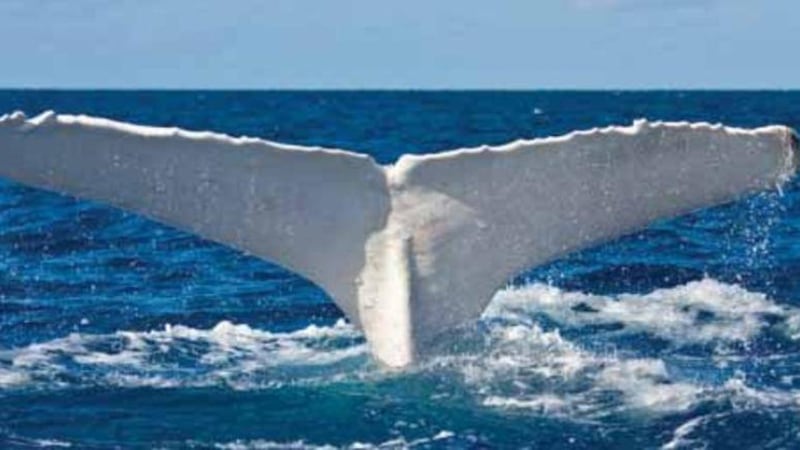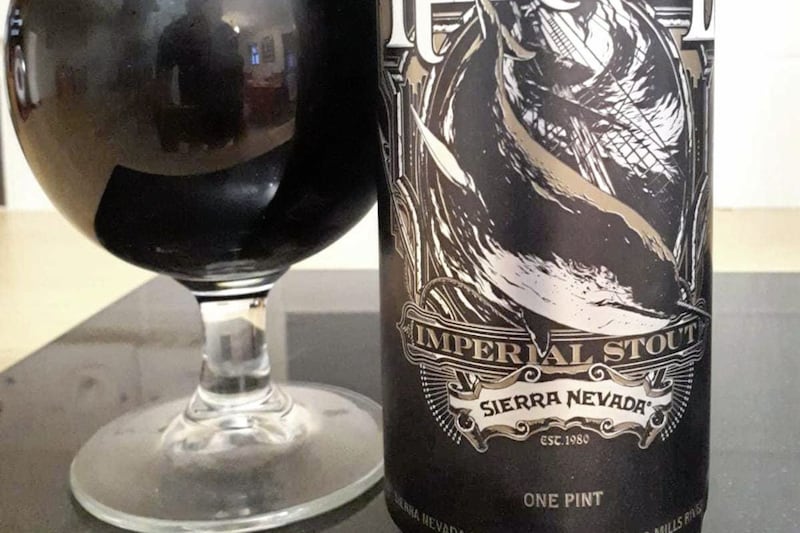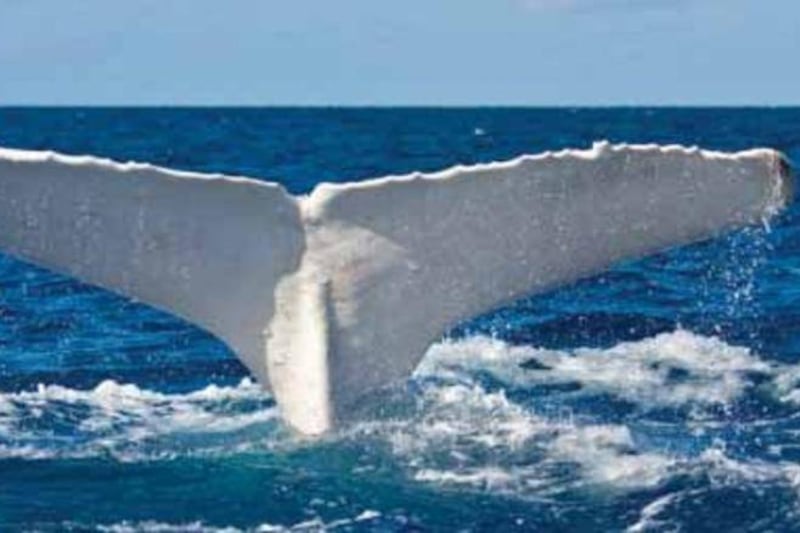THE reported sighting of a 40ft white humpback whale off the Irish coast by two fishermen has sparked hopes that one of nature’s greatest rarest phenomena has found its way to our waters.
Seasoned skipper Pat Collins, who is also an experienced whale and dolphin spotter, was recently hauling nets with crewman Gerard Minihane when the men saw “low bushy blows from a snow-white humpback whale” 14 miles off the coast off Baltimore village in west Cork.
Anyone who has ever attempted to tackle Herman Melville’s epic novel Moby Dick will know that those who complete the challenging tome are a rare minority. Well, confirmed sightings of white whale and dolphins in the wild are even rarer.
It is very fitting that Cork should claim the first sighting of a white whale – John Huston’s screen adaptation of Melville’s work, which features a fictional sperm whale, was partly filmed in Youghal, after all.
Unfortunately, Pat and Gerard were handling nets when they saw the whale so were unable to take photographs, but they did contact Nic Slocum, sightings coordinator for Baltimore Whale and Dolphin Watch.
A trained zoologist, Nic, who has been watching whales and dolphins around the Irish and UK coasts for a quarter of a century, says it is likely that the Baltimore whale may be albino – there have been around 20 species of cetaceans affected by albinism, including sperm whales, bottlenose dolphins, southern right whales, killer whales and of course humpback whales.
Albinism is a rare condition that causes a lack of the chemical melanin in the body, which is responsible for the pigmentation in skin and hair and other body areas, resulting in white hair or skin and pink or red eyes being the characteristic most associated with this rare occurrence.
However, the whale may also be leucistic, often mistaken for albinism, but with some pigment present, possibly dark patches or dark-coloured eyes.
In 2012, Welsh maritime engineer Dan Fisher was on a boat trip to Svalbard in Norway when he saw a white humpback whale, which he named Willow. It is possible that Willow travelled south and was feeding, or just passing through Irish waters earlier this month.
The best-known white humpback is Migaloo, which translates as ‘white fella’ in Aboriginal language, who was first spotted off Australia in 1991 and has been seen dozens of time since. Migaloo is even on Twitter on @Migaloo1 and Facebook on https://m.facebook.com/MigalooWhiteFella.
There has been some online debate over whether a white humpback photographed in New Zealand’s Cook Strait earlier this month is Migaloo or another animal.
Although white whales are a source of fascination Nic says that life for them is not without its challenges.
“In spite of being otherwise healthy, such animals are likely to suffer skin problems, possibly even skin cancer due to the lack of protective melanin pigment in the skin. These animals may stand out more giving greater visibility to predators, especially when young. Their colouration may also create issues of social integration within their own species and subsequent ability to attract a mate,” he adds.
And there are obvious concerns that vulnerable sea creatures may end up being pestered by unwitting or callous humans. A case in point is the young albino dolphin known as Angel. Captured during the controversial annual Taiji dolphin drive, when pods are corralled in a cove and either slaughtered for sale in Japanese supermarkets or sold to aquariums and marine parks.
During the 2013/14 season Angel was separated from her mother and relocated to the Taiji Whale Museum in southern Japan, where she attracts big crowds. Conservationists continue to campaign for her release back into the wild and have set up a Facebook page on https://www.facebook.com/pages/Save-the-White-Dolphin-of-Taiji/198870430309468.
Meanwhile, Nic offers some sensible advice for those who may be lucky enough to see a marine animal in the wild. Slow down to tick-over speed when animals are present, turn off engines when safe to do so, arrive and depart the viewing area at tick-over speed, don't corral animals if more than one boat is present, limit your time with the animals and never try to get close to animals – let them approach you.
ENDS




